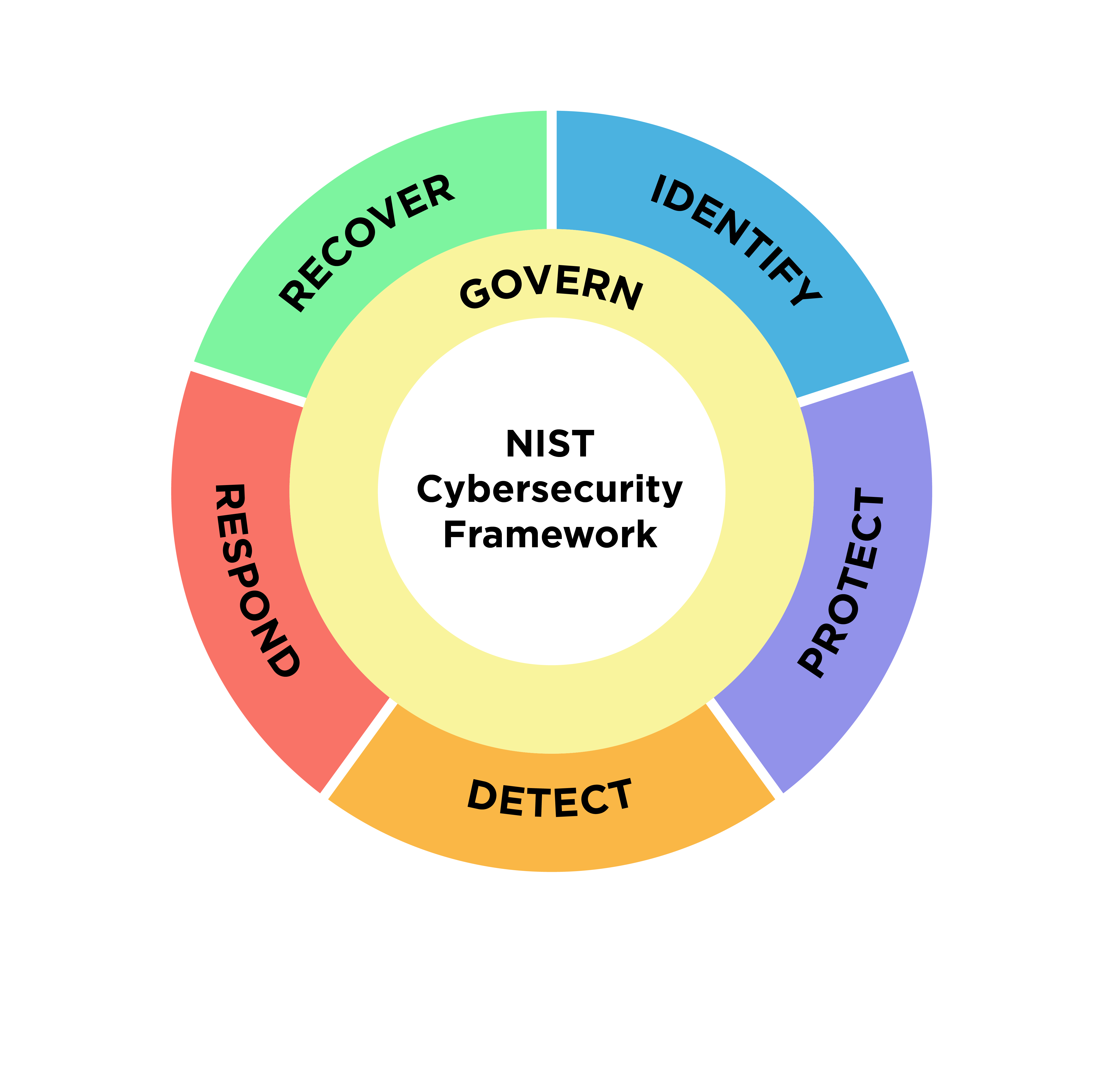 | VS |  |
| NIST CSF 2.0: New & Improved! | NIST CSF 1.1 |
What’s New in CSF 2.0?
The biggest change? Even though many organizations already use NIST CSF, it was originally focused on protecting critical infrastructure, like power and water grids. The focus has shifted from solely protecting critical infrastructure to encompassing ALL organizations. This means no matter your industry, size, or budget, the CSF provides a valuable roadmap for managing your cybersecurity risks. Additionally, there’s a new emphasis on governance, ensuring your leadership team is actively involved in shaping your cybersecurity strategy.
But that’s not all! The CSF 2.0 also boasts a brand new Reference Tool. This nifty resource simplifies implementation by allowing you to browse, search, and export the framework’s core guidance in user-friendly formats. Plus, there’s a searchable catalog of informative references that helps you see how your existing security practices map onto the CSF.
Major Differences vs. CSF 1.1
While the core remains the same – identify, protect, detect, respond, and recover – CSF 2.0 offers a broader perspective over CSF 1.1. Here’s a quick breakdown:
- Scope: Expanded from critical infrastructure to all organizations.
- Focus: Governance takes center stage, ensuring leadership involvement.
- Implementation: New Reference Tool streamlines the process.
- Integration: Improved mapping of existing security practices to the CSF.
Top Benefits of CSF 2.0
So, why should you care about this update? Well, the benefits are plentiful:
- Updated reference documentation: The new framework includes a governance function and slight reorganization of existing sub-categories.
- Quick Start Guides: The reference materials in the quick start section show how you can conduct a current vs. target state mapping to develop an organizational profile, community profiles if you wanted to generate them for sector or industry, and a small business guide with lightweight advice on how to get started.
- CSF 2.0 Profiles: The profiles section contains a template spreadsheet you can download to create the current an target profiles for your organization.
- Implementation Examples: The examples pdf typically gives 2-4 example implementations within each sub-category. These are not exhaustive, but are a great illustration that will give you a head start on an assessment or an implementation.
- Reference Tool: A reference tool, similar to CSF Tools (but not as user friendly). This has some tags you can filter (control family, publication, etc.) but I find it hard to use and will probably use a spreadsheet or other resources.
Limitations and Drawbacks
Of course, no framework is perfect. Here are some things to keep in mind:
- Not a Silver Bullet: The CSF provides guidance, not prescriptive solutions. You’ll still need to tailor your approach to your specific needs.
- Generalities: The framework and reference tools will give general guidance, but is not tailored to your specific situation, industry, or risk posture. It will help you manage risk and activities, but it will not guarantee protection.
- Resource Intensive: Implementing the CSF effectively may require additional resources or personnel.
- Update your documents and work products! If you’ve already been using the previous version of the CSF, think about all the places you’ll need to update to match the current framework:
- Policy references
- Control tests and test plans
- Reports, dashboards, and OKRs
- Maturity assessments – if you perform your own, update your templates and methodology. If you use consultants or third-party platforms, check when they will be using the new version and when they will have benchmark references available
- Alignment with other internal/external risk management functions and entities
Conclusion
NIST CSF 2.0 is a significant leap forward. It empowers organizations of all sizes to take a proactive stance against cyber threats. By leveraging the framework’s guidance and tools, you can move toward a stronger cybersecurity posture or level up your current processes and procedures.
Head over to the NIST website https://www.nist.gov/cyberframework and start exploring the CSF 2.0 today! Remember, a secure organization is a successful organization!
